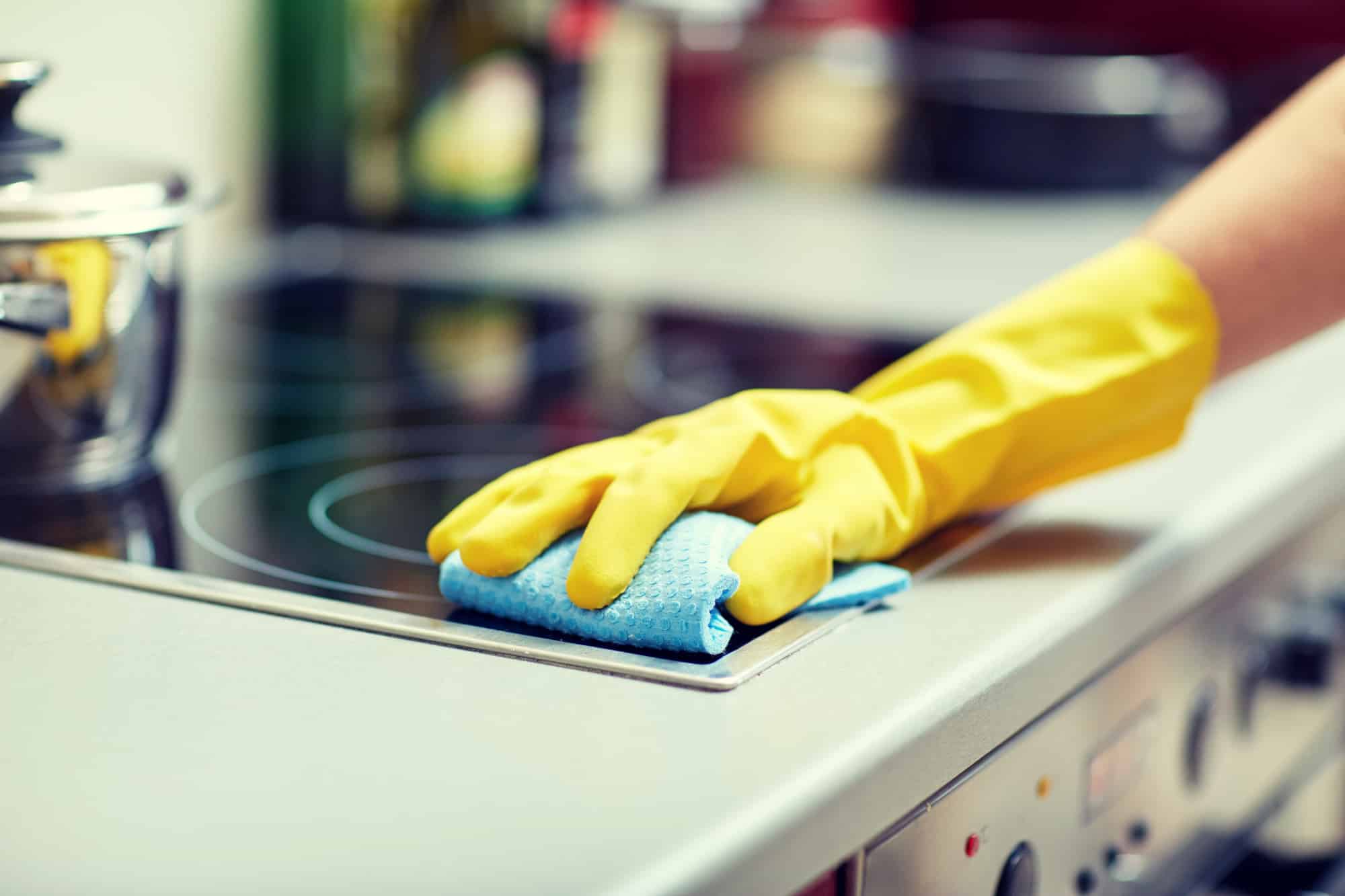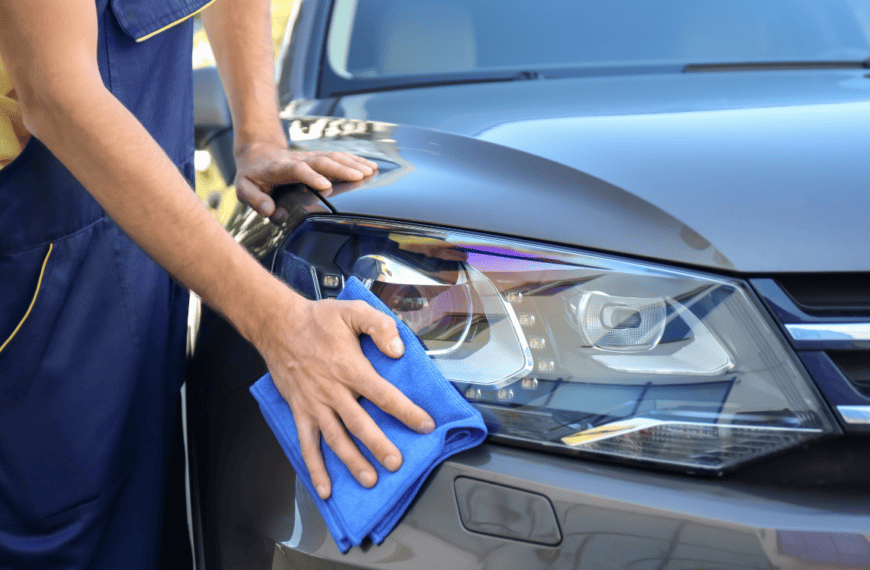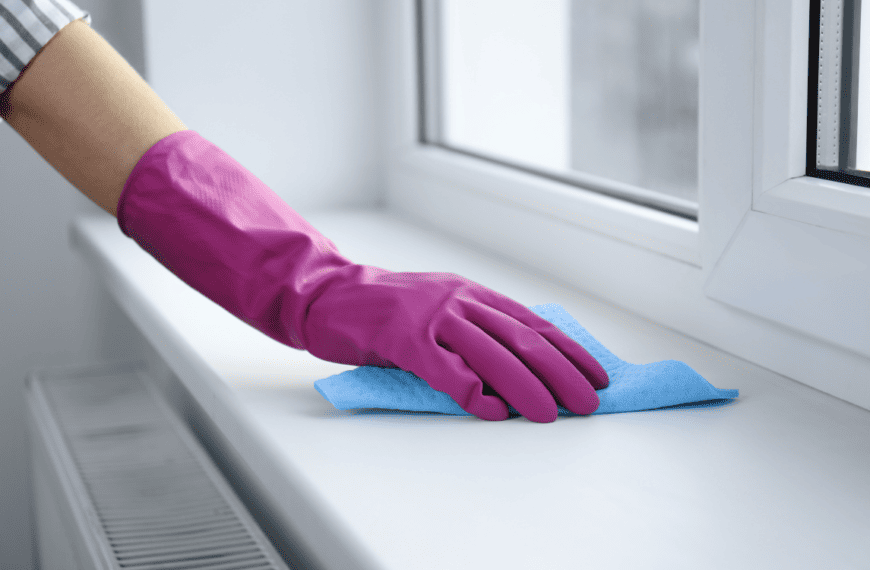When cleaning the kitchen, most of us have a routine that includes sweeping and mopping the floors, wiping down the counters, and wiping down the microwave and fridge.
But, when’s the last time you properly cleaned your stove? While you likely wipe it down along with the other surfaces in your kitchen, your stove sometimes needs special attention to really get clean.
Read this step-by-step guide to learn how to clean a stove.
How Often Should You Clean Your Stove?
Ideally, you should wipe down your stovetop after every use. This will ensure that food debris doesn’t get stuck to the stove and become more difficult to remove later on.
Additionally, you should give your stove a deep clean once a month. This also includes cleaning the inside of the oven.
Cleaning an Electric Stovetop
Cleaning an electric stovetop is a pretty straightforward process. Before you begin cleaning, make sure your stove is turned off and completely cooled down.
Then, use a sponge or a clean cloth and wipe down the surface with warm, soapy water. While some coil burners are self-cleaning, food and debris can still build up in them. If your coil burners are dirty, lightly wipe them down as well.
Next, turn your burners on high to burn off anything that’s left on them. It’s normal for the burners to smoke, so don’t be alarmed if this happens. Once the smoking stops, turn off the burners and let them cool completely. Then, use a clean, dry towel to remove and wipe off any remaining debris.
After this, you can remove the drip pans and soak them in hot, soapy water. If they’re extra dirty, you can also put them in a plastic bag with a bit of ammonia and let them soak overnight. Remove the drip pans the following morning and rinse them out with clean water.
Finally, dry them with a lint-free cloth.
Deep Cleaning an Electric Stovetop
If you’re looking to give your electric stovetop an extra deep clean, you can mix some baking soda with a bit of water to form a paste. Then, use a soft scrubber or some type of non-abrasive cleaning tool to remove any gunk on your stove.
If there are any hardened foods on your stovetop, you can use a spatula or plastic knife to scrape them off. For stubborn spots, use baking soda or a stovetop cleaner recommended by your manufacturer.
Make sure you don’t get any water in the burner connections to avoid electric shock.
Cleaning a Gas Stove Top
Cleaning a gas stovetop takes a bit more work, as there are more parts that can collect food. Before you start cleaning, ensure that the burners are turned off and completely cool.
Then, remove the grates and the reflector drip pans from the stove and soak them in hot, soapy water. Allow the parts to soak for 15 to 20 minutes, then use a mesh pad to scrape away any remaining gunk. You can also use a baking soda paste to clean these components.
You can also use a plastic knife or spatula to scrape away any dried bits remaining on the stovetop. When you’re done, wipe down the stovetop one last time and reassemble everything.
If your gas stovetop is heavily soiled, you may need to use a razor scraper to remove sticky or hardened foods. However, make sure to read your owner’s manual first, as some of them may recommend against using a razor scraper.
If you can use a razor scraper on your stovetop, first spray it down with some white vinegar. This will help soften any stuck-on debris. Scrape the debris gently and slowly using the razor, ensuring to keep it as flat as possible so it doesn’t scratch your stove.
If you use the corners of the blade or move the blade in the wrong direction, it can cause permanent damage to the stove. Use a microfiber cloth to wipe away any loose debris, then repeat the process as needed.
Other Products for Cleaning Your Stove
In addition to the above instructions, there are some other household products you can use to keep your stove clean.
As we mentioned, baking soda and water is a simple and effective combination for cleaning your stove. Other options include:
- Salt and Baking Soda: Mixing one tablespoon of salt with one tablespoon of baking soda will create another excellent stove-cleaning mixture. The coarseness of the salt essentially acts as a mini-exfoliator for your stovetop, helping buff out any stuck-on debris.
- Water and Lemon: You can also use a combination of filtered water, liquid soap, and lemon juice to clean your stove. The acid in lemons is antibacterial and antiseptic, making it a terrific cleaner. You can combine the ingredients to create a cleaner that works great at removing burned-on food.
- Hydrogen Peroxide and Baking Soda: These ingredients combined will pack a major punch for your stove. Sprinkle the surface of your stove with baking soda, then drizzle on some hydrogen peroxide. The ingredients will fizz when in contact and break down the stuck-on gunk.
Clean a Stove: Time to Get Started
As you can see, cleaning a stove is a fairly straightforward process. However, the process to clean a stove can be time-consuming, which is why we recommend hiring professional cleaners to do it for you!
If you’re looking to hire professional cleaners in the Santa Cruz, San Diego, or Santa Clara area, request a booking today!









